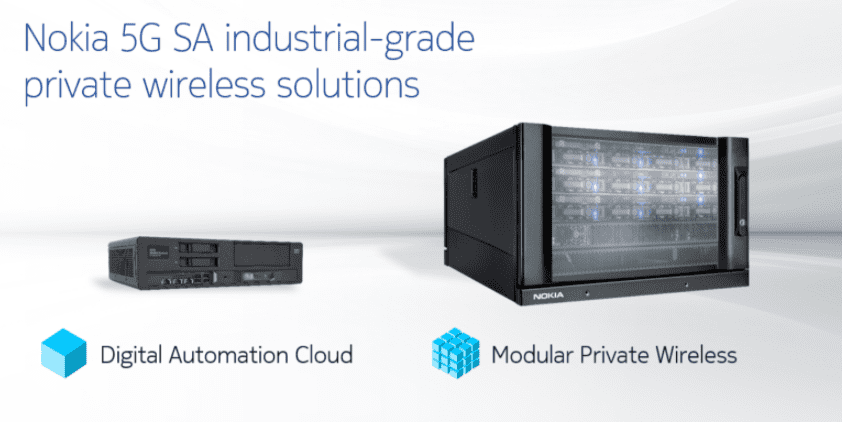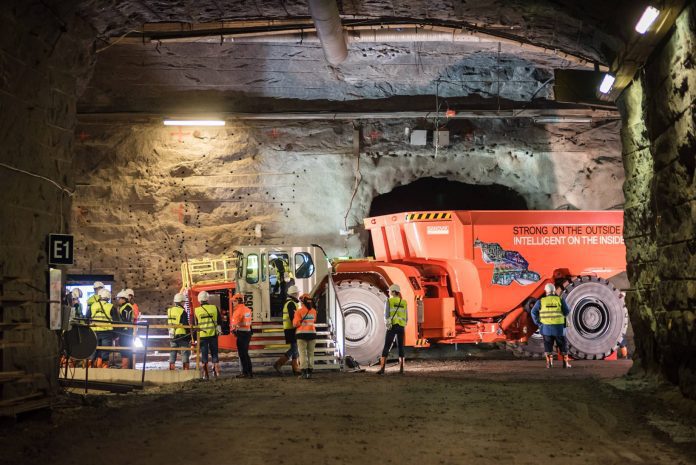Nokia has announced the commercial availability of its industrial-grade standalone 5G (5G SA) solutions for private enterprise networks, alongside a new contract with the mining division of Swedish tool manufacturer Sandvik for deployment of a 5G SA network at its test mine in Tampere, in Finland.
Nokia said it has more than 180 private wireless enterprise customers worldwide; 30-odd engagements are for industrial 5G networks, including recent deals with the likes of German rail firm Deutsche Bahn, German airline services provider Lufthansa Technik, and Japanese car maker Toyota. Nokia has been running trials with customers (including mobile operator partners, it said) since the start of 2020.
Nokia already has a deal with Sandvik in Finland for LTE-based private networking and digital cloud services, via Finnish private networking provider Edzcom, which owns spectrum at 2.6 GHz and 450 MHz in Finland, and has been a key partner for Nokia in its pursuit of industrial networking contracts.
The new 5G SA offering provides an entry point for the high-spec Industry 4.0 movement, for demanding industrial and manufacturing applications, it said. The Finnish outfit is claiming the “most comprehensive” portfolio of private LTE and 5G networking solutions in the market, with new enhancements for its high-end LTE-based enterprise proposition as well, including launch of the first Band 87 (410MHz) radio for private wireless in the public safety, transport, and utilities sectors.
The new industrial 5G SA offer is presented as a plug-and-play cloud-based offer or a full-blooded on-premise setup, as part of its Digital Automation Cloud and Modular Private Wireless propositions, respectively, in line with its existing LTE-based private networking offers. Nokia says 85 percent of industrial use cases will continue to be well-served by advanced LTE (“4.9G LTE,” in the company’s marketing), and 5G SA will cover more demanding use cases; the company is offering enterprise an upgrade path via LTE, or a ‘direct to 5G’ route to industrial transformation.
Industrial grade 5G SA-proper took a leap forward this month after the 3GPP standards group froze Release 15 of the SA architecture. However, fully fledged industrial 5G networks, offering ultra-reliable low-latency communications (URLLC) and time-sensitive networking (TSN) functionality (and further refinements in releases 16-through-18 in the next couple of years), will only afford critical-grade functionality after 2021, at the earliest.
Nokia noted in its press statement the commercial availability of its 5G SA networking gear, now, is important to foster “use case validation and ecosystem development”, among telecoms and cloud providers, systems integrators, and industry specialists. The company noted, as well, the release of its enterprise-geared 5G SA products is a boon for industrial sectors in Germany, the UK, and Japan, which have each moved at government-level to make dedicated ‘vertical’ spectrum available for industry outside of traditional high-stakes public spectrum auctions.
It stated: “Nokia is also enabling OEM and ecosystem partners to accelerate validation of 5G capabilities. This will help kickstart the development of 5G-capable industrial assets, accelerate application development, and integrate 5G into future industrial processes and systems.”
The deal with Sandvik’s mining and rock technology business is for a 5G SA version of Nokia’s cloud-based DAC solution. It will provide high-end cellular connectivity in a “highly challenging”, “real-life” mining facility, at the Swedish firm’s test mine in Tampere.
Sandvik will use the cellular network as a springboard to test and develop prototype mining solutions for its customers. A press statement from the two companies lists its use for industrial automation, and specifically for remote control of deep-underground machinery from a surface control centre using 4K video links.
Patrick Murphy, president of rock drills and technologies within Sandvik’s mining and rock technology business, said: “We can showcase an entirely new range of game-changing capabilities. The introduction of 5G opens the door to new opportunities in robotics, remote and autonomous operations, full-fleet automation, analytics and enhanced safety. As such, it comprises a breakthrough in the digital transformation of mining.”
Raghav Sahgal, president of Nokia’s enterprise division, said: “By delivering 5G SA, we’re paving the way to accelerate digitalization in the most demanding of use cases such as automotive manufacturing, where cloud, robotics and autonomous machine operations create mission-critical demands for reliable low latency and high data rate.”
He added: “With this announcement we bring the best of both worlds. We are offering customers the choice to start with 4.9G/LTE, and evolve to 5G as the ecosystem matures, or alternatively, to go ‘direct to 5G’ – validating the technology and driving OEM and industrial asset vendors to develop a thriving 5G ecosystem.”
Pablo Tomasi, principal analyst for private networks at Omdia, remarked: “The private networks market will be built on the trust and results delivered by private LTE. However enterprises, vendors, and service providers must start now to understand the real potential of 5G and how to incorporate it into their strategies. By moving quickly with a 5G SA Private Network offering Nokia has now the opportunity to secure a pivotal role in driving the growth of the 5G ecosystem for enterprises.”


